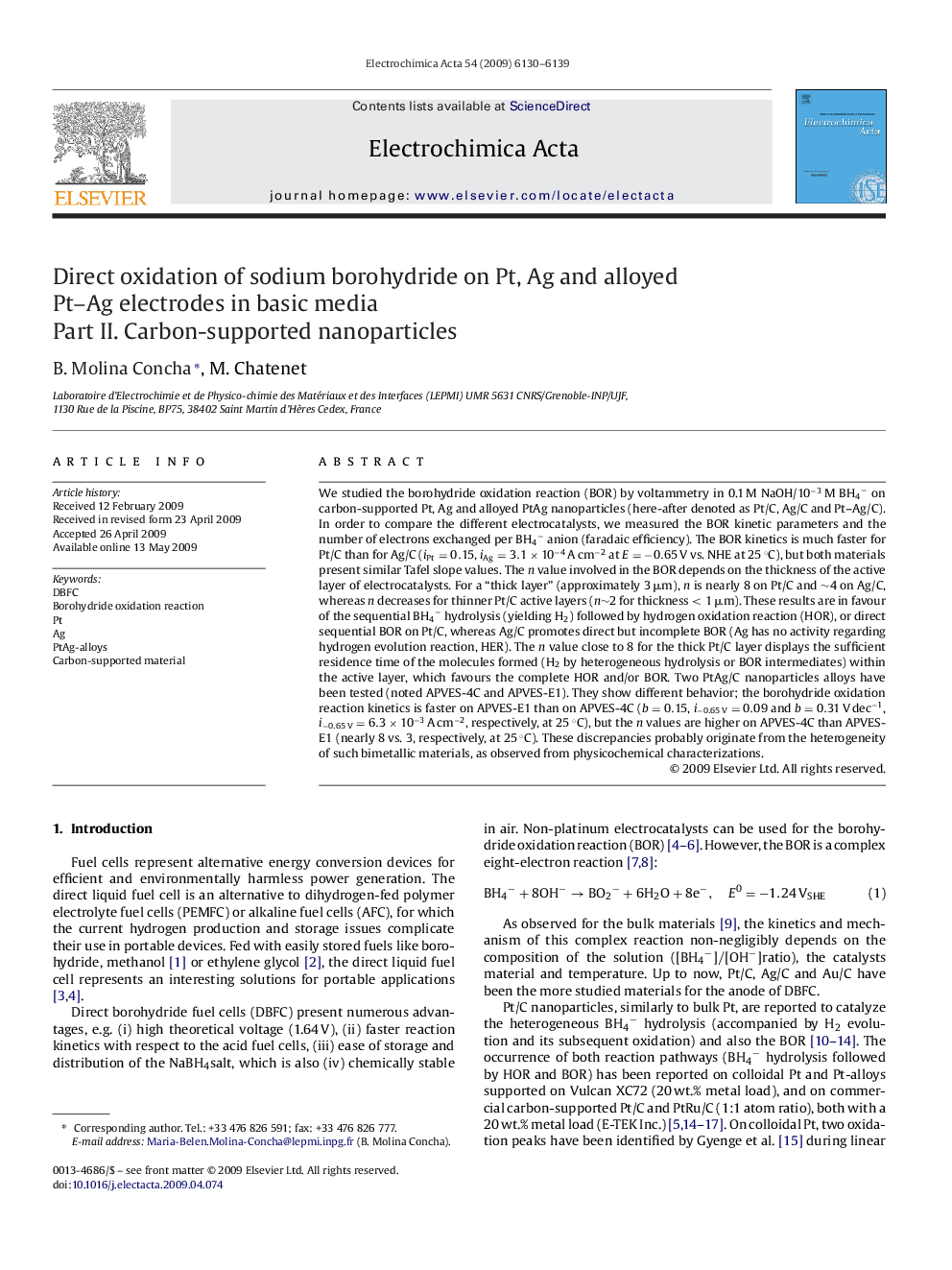| Article ID | Journal | Published Year | Pages | File Type |
|---|---|---|---|---|
| 193177 | Electrochimica Acta | 2009 | 10 Pages |
We studied the borohydride oxidation reaction (BOR) by voltammetry in 0.1 M NaOH/10−3 M BH4−BH4− on carbon-supported Pt, Ag and alloyed PtAg nanoparticles (here-after denoted as Pt/C, Ag/C and Pt–Ag/C). In order to compare the different electrocatalysts, we measured the BOR kinetic parameters and the number of electrons exchanged per BH4−BH4− anion (faradaic efficiency). The BOR kinetics is much faster for Pt/C than for Ag/C (iPt=0.15iPt=0.15, iAg=3.1×10−4iAg=3.1×10−4 A cm−2 at E=−0.65E=−0.65 V vs. NHE at 25 °°C), but both materials present similar Tafel slope values. The n value involved in the BOR depends on the thickness of the active layer of electrocatalysts. For a “thick layer” (approximately 3 μm), n is nearly 8 on Pt/C and ∼4∼4 on Ag/C, whereas n decreases for thinner Pt/C active layers (n∼2n∼2 for thickness <1<1 μm). These results are in favour of the sequential BH4−BH4− hydrolysis (yielding H2) followed by hydrogen oxidation reaction (HOR), or direct sequential BOR on Pt/C, whereas Ag/C promotes direct but incomplete BOR (Ag has no activity regarding hydrogen evolution reaction, HER). The n value close to 8 for the thick Pt/C layer displays the sufficient residence time of the molecules formed (H2 by heterogeneous hydrolysis or BOR intermediates) within the active layer, which favours the complete HOR and/or BOR. Two PtAg/C nanoparticles alloys have been tested (noted APVES-4C and APVES-E1). They show different behavior; the borohydride oxidation reaction kinetics is faster on APVES-E1 than on APVES-4C (b=0.15b=0.15, i−0.65V=0.09 and b=0.31b=0.31 V dec−1, i−0.65V=6.3×10−3 A cm−2, respectively, at 25 °°C), but the n values are higher on APVES-4C than APVES-E1 (nearly 8 vs. 3, respectively, at 25 °°C). These discrepancies probably originate from the heterogeneity of such bimetallic materials, as observed from physicochemical characterizations.
